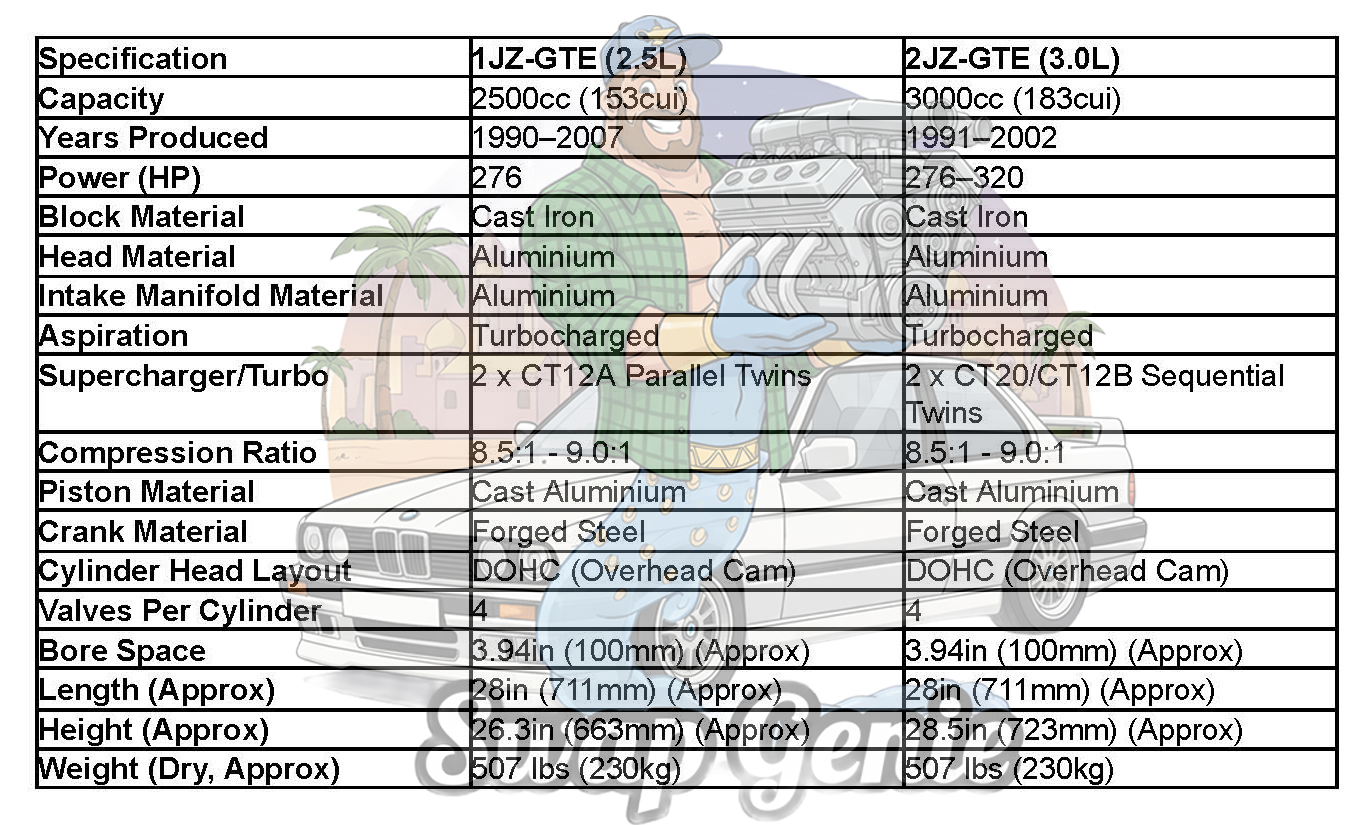Engine-pedia: iS THE tOYOTA 2JZ tHE GREATEST jdm 6-CYLINDER?
For automotive enthusiasts "2JZ" is synonymous with legendary performance, immense tunability, and almost bulletproof reliability. Born from the golden era of Japanese tuner-friendly cars, the naturally aspirated 2JZ-GE and twin-turbocharged 2JZ-GTE have carved an indelible mark in automotive history.
The JZ engine of DOHC in-line 6-cylinder engines debuted in 1990, replacing the M-series in-line-sixes. The 2.5-litre 1JZ was the first iteration, followed shortly by the larger 3.0-litre 2JZ variants. These engines were primarily designed for Toyota's luxury and sports cars, aiming to deliver smooth power delivery and refinement, and Toyota engaged Yamaha to help engineer the JZs.
The 2JZ-GE first appeared in 1991, powering vehicles like the Lexus SC 300, GS 300, and later, the fourth-generation (JZA80) Toyota Supra SZ. It was a capable naturally aspirated engine, but it was the introduction of the force-fed 2JZ-GTE in 1993, specifically for the MK4 Supra RZ, that truly cemented the engine's iconic status. The RZ Supra quickly became a performance benchmark, dominating drag strips, street races, and circuits worldwide, but it was elevated to icon status following its starring role as the hero car in the 2001 street racing movie The Fast & The Furious.
Part of the massive tuner appeal of the JZ engines is their ability to handle forced induction. While other engine platforms need to be built-up with aftermarket internals to handle the pressure, the 2JZ-GE was renowned for being almost as good as the factory turbo-spec GTE engines when it came time to make race car power.
This was possible because of the base engineering Toyota endowed all JZ engines with. Both JZs share the 2997cc capacity and square 86 mm x 86 mm bore and stroke in the cast iron block, as this is intended to offer superior engine balance compared to an over- or under-square engine. The 2JZ-GE featured a boost-friendly 10.0:1 compression ratio, which was later upgraded to 10.5:1 on engines equipped with VVTi. The 2JZ-GTE ran lower compression of 8.5:1, and also featured stronger rods and oil squirters for piston cooling.
Both GE and GTE engines used a Yamaha-designed alloy dual-cam 24-valve cylinder head, and a 2JZ-GTE measures up at approximately 749mm (29.5in) long, 749mm (29.5in) wide, and 657mm (25.8in) tall. The 2JZ-GTE is also claimed to weigh as much as 230kg with turbos and ancillaries, meaning it is not a lightweight swap option.
With a firing order of 1-5-3-6-2-4, the 2JZ-GE was rated at 220hp-230hp (164kW-172kW), the GTE was rated at 320hp (235kW) in North America and Europe and a laughable 280hp (206kW) in Japan due to their “gentleman’s agreement” between manufacturers to not sell cars with more than 280hp.
2J engines were updated with Variable Valve Timing with intelligence (VVTi) system in 1995 (2JZ-GE) and 1997 (2JZ-GTE), which improved low-end torque and fuel efficiency by continuously adjusting the intake camshaft timing. While rumours abound that VVTi engines are weaker than non-VVTi engines due to thinner con rods, this isn’t true and the bottom-ends are shared between both.
There are significant differences in the Hitachi turbochargers between the Japanese market cars, and the European and American market cars. The JDM 2JZ-GTE used two CT12B turbos with lightweight ceramic wheels, while Europe and America scored larger Hitachi CT20A, and the CT20A turbochargers are favoured among fans of retaining the sequential twin-turbo hardware as their steel wheels can be boosted harder.
Toyota’s sequential twin-turbo system was a marvel of its time, designed to provide a broad powerband by using a smaller turbo to spool quickly at lower RPM for immediate response, while the second, larger turbo came on at higher RPMs to provide a heady surge of top-end power. With advancements in aftermarket ECUs and other hardware, today the aftermarket tends to favour fitting one single large-frame turbo.
The sheer strength of the 2JZ-GTE's bottom end is legendary. With minimal modifications, the stock internals are capable of handling 600-700 hp (450-520 kW), and with forged internals, builds exceeding 1000 hp (745 kW) are commonplace. This incredible resilience is attributed to its over-engineered cast-iron block, robust crankshaft, and durable connecting rods.
The abundance of aftermarket support, coupled with its straightforward design, makes the 2JZ-GTE an ideal platform for performance tuning. From larger single-turbo conversions to advanced engine management systems and fuel delivery upgrades, the possibilities are virtually endless. Even the naturally aspirated 2JZ-GE can be a strong candidate for turbocharging, leveraging its strong bottom end.
Despite production ending in 2002 the 2JZ engine family, particularly the GTE, continues to be highly sought-after. Today these brutish in-line turbo 6-cylinder engines power countless drift and drag cars, as well as high-performance street cars all over the world. Its robust design, coupled with its iconic status, ensures that the 2JZ will remain a cornerstone of performance automotive culture for decades to come.
While they’re robust in the extreme, the 2JZ engines suffer a couple of drawbacks. The demand for 2JZ engines and their advancing age has led to prices for good running engines rising sharply today, while the weight of the engine have seen more modern engines like the all-aluminium LS V8 and Honda K-series 4-cylinder fill the role of 500-600hp street engines that used to be almost solely the domain of the 2J.







